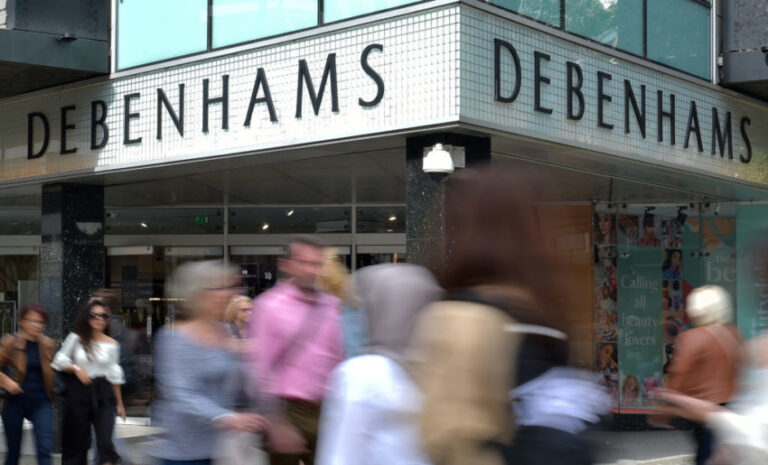[ad_1]
Nearly 90% of former Debenhams stores remain empty almost a year after the department store closed its doors for the last time, in a sign of the challenge to reinvent high streets across the country.
The empty shops are among nearly 8,000 outlets left empty last year, according to a report by the high street analysts Local Data Company (LDC), as Covid lockdowns accelerated the shift towards shopping online and pummelled city centres.
However, that was down from 11,319 net closures in 2020, as fewer businesses fell into administration, while more than 43,000 new businesses opened, an increase of more than 10%.
Fast-food outlets, barbers, grocery stores, cafes and beauty salons were the fastest-growing sectors, as independent businesses took advantage of cheaper rents to launch.
There was also a significant bounce-back in the leisure industry, with a net 52 outlets closing compared with 2,640 a year earlier, as restrictions on dining out eased and takeaway businesses continued to boom. Clothing stores, banks, charity shops and pubs were hardest hit.
Lucy Stainton, the commercial director at LDC, said department stores were a particular problem, with only 12% of recently vacated sites now reoccupied, while just over a fifth of former BHS outlets remained empty five years after the department store collapsed as a result of the costs of fitting out and maintaining such large sites.
She said landlords and councils would have to think beyond retail to fill the space as there was a “knock-on impact” on the attractiveness of a town or shopping centre when key sites remained vacant.
Projects under way include the transformation of the former Debenhams in Gloucester into a student campus, while Manchester’s Kendals building, home to House of Fraser, is to be converted into offices.
There are signs of recovery as landlords redevelop empty buildings to adapt to a new shopping and leisure landscape at a rapid pace. The proportion of vacant premises slipped to 14.4% from 14.5% after six years of increases.
More than 9,100 retail and leisure premises were redeveloped in 2021, up nearly 49% on the year before. However, 5% of high street outlets have remained empty for more than three years and 6% of those in shopping centres, according to the report.
LDC predicts a gradual reduction in the vacancy rate over the next few years, but is not expecting a swift return to pre-pandemic levels. It said “drastic action” was needed to adapt shopping destinations, including more redevelopment – and there could be a net 9,000 reduction in the number of shops and high street services such as banks and leisure businesses next year.
The report flags the end of the commercial rent moratorium, business rates relief and grants for occupiers and local authorities this spring, as well as inflation driven by higher costs for retailers, rising interest rates and a national insurance increase. It says these factors are “likely to make 2022 another challenging year for occupiers across the retail sector”.
[ad_2]
Source link























0 Comments